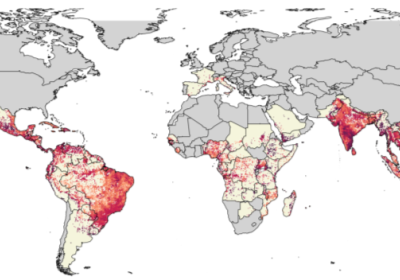
India is poised to experience the most significant long-term impact from the mosquito-borne virus chikungunya, according to a groundbreaking study that utilizes machine learning to map global risk areas. Conducted by researchers from the London School of Hygiene & Tropical Medicine (LSHTM), Nagasaki University, and the International Vaccine Institute in Seoul, the study reveals that more regions are at risk than previously believed.
The research, which is the most comprehensive mapping of chikungunya risk to date, indicates that 14.4 million people globally could be at risk of infection each year. Alarmingly, 5.1 million of these individuals are in India. The analysis further suggests that the virus could spread to areas not currently considered at risk, potentially raising the global figure to 34.9 million, with 12.1 million in India alone.
Chronic Health Impacts and Global Concerns
India, Brazil, and Indonesia are identified as the countries most likely to face substantial long-term impacts from chikungunya. Together, India and Brazil account for 48% of the global impact on healthcare systems and individuals. The study highlights chronic health impacts as a primary concern, with evidence suggesting that around 50% of those infected suffer long-term disabilities.
Chikungunya has emerged as a growing public health issue, reported in over 114 countries since its re-emergence in 2004. Spread by Aedes aegypti and Aedes albopictus mosquitoes, the virus causes severe joint pain and high fever. While most patients recover within weeks, over half experience prolonged joint pain and disability, and cases can occasionally be fatal.
Machine Learning and Predictive Modelling
This study is the first to predict chikungunya’s burden using machine learning, integrating existing infection data with factors like mosquito prevalence, temperature, precipitation, and national GDP. Previous estimates often relied on surveillance and outbreak reports, which tend to underestimate the true number of cases.
The model predicts the annual infection risk, revealing that on average, 1.2-1.3% of those at risk could become infected each year. This is lower than dengue’s 6% risk, yet certain areas, such as Gabon, could see infection rates as high as 11% among at-risk populations.
Implications for Public Health Strategies
Hyolim Kang, who led the study, emphasized the importance of preventing chikungunya’s spread beyond subtropical and tropical regions. She noted,
“Prevention of the spread of this disease is important for everyone. There are no specific antiviral therapies for chikungunya and treatment relies solely on supportive care.”
Sushant Sahastrabuddhe, a co-author of the study, highlighted the urgency of using the model in real-time to manage current cases and prepare for future outbreaks.
“The potential spread of vectors carrying viruses like chikungunya won’t wait for us to carry out years of research,”
he stated.
Future Directions and Global Collaboration
The study’s findings are intended to inform global prevention strategies, such as those by the WHO SAGE Working Group on Chikungunya Vaccines. The researchers hope their work will aid in identifying regions at risk of long-term burden and support geographical prioritization efforts.
Kaja Abbas, a senior author of the study, highlighted the utility of the model in informing outbreak response strategies.
“Our model-based estimates are useful to inform outbreak response immunization strategies for different age groups using the two licensed vaccines in Brazil and globally,”
he explained.
The maps produced by the study represent a snapshot of the long-term annual average risk and do not account for unexpected changes due to extreme weather or climate change. Nevertheless, they provide a crucial tool for public health professionals worldwide.
The study, titled “Global, regional and national burden of chikungunya: force of infection mapping and spatial modelling study,” is published in BMJ Global Health. It marks a significant step forward in understanding and mitigating the impact of chikungunya on a global scale.







